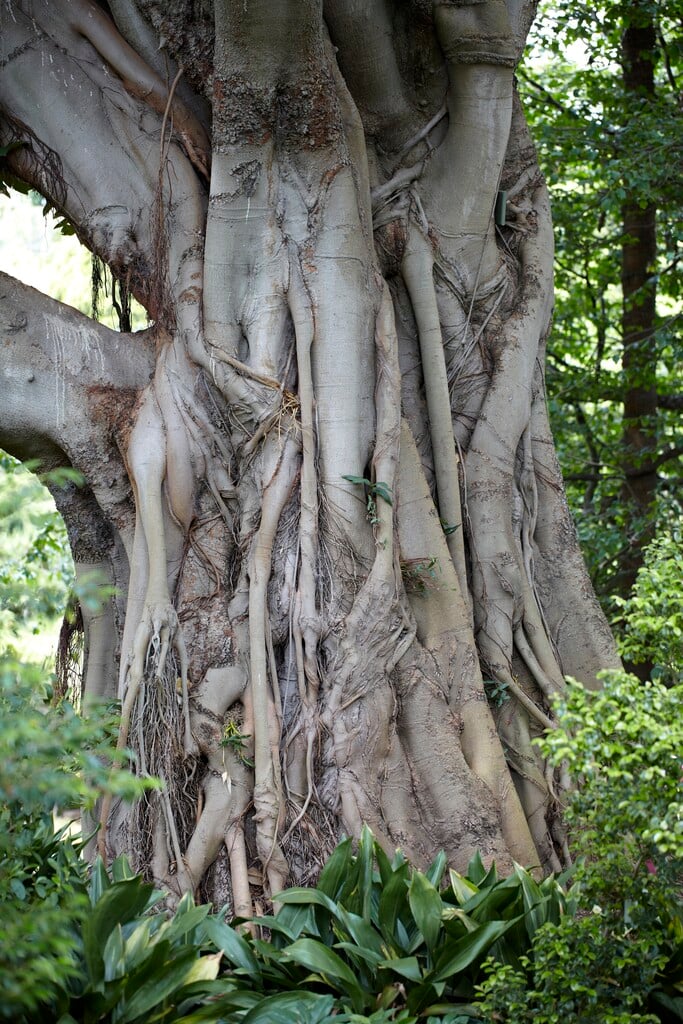Ficus macrophylla
Australian banyan
A large, subtropical evergreen tree, over 30m high in its native range, with buttressed trunks, widely spreading branches, and sometimes aerial roots that can hang down to the ground, forming secondary trunks. Leaves are oval to elliptic and leathery, with brownish undersides, and can be up to 30cm long. Small, round figs are green with cream spots and ripen to purple
Size
Ultimate height
Higher than 12 metresTime to ultimate height
20–50 yearsUltimate spread
Wider than 8 metresGrowing conditions
Moisture
Moist but well–drained, Well–drainedpH
Acid, Alkaline, NeutralColour & scent
| Stem | Flower | Foliage | Fruit | |
| Spring | Green | |||
|---|---|---|---|---|
| Summer | Green | Green Purple | ||
| Autumn | Green | Green Purple | ||
| Winter | Green |
Position
- Full sun
- Partial shade
Aspect
East–facing or South–facing or West–facing
Exposure
Exposed or Sheltered Hardiness
H1BBotanical details
- Family
- Moraceae
- Native to GB / Ireland
- No
- Foliage
- Evergreen
- Habit
- Spreading branched
- Potentially harmful
- Skin allergen. Wear gloves and other protective equipment when handling
- Genus
Ficus can be evergreen or deciduous trees, shrubs or climbers, with often leathery, simple, entire or lobed leaves and tiny flowers borne within a hollow receptacle which enlarges to form the fruit
- Name status
Unresolved
How to grow
Cultivation
Thrives in fertile soil, in its native range it is found in subtropical and warm temperate rainforests (minimum temperature 10°C). Rarely grown in gardens due to its size and aggressive root system
Propagation
Propagate by seed or by semi-hardwood cuttings
Suggested planting locations and garden types
- Architectural
Pruning
Pests
May be susceptible to aphids and scale insects
Diseases
May be susceptible to honey fungus
Get involved
The Royal Horticultural Society is the UK’s leading gardening charity. We aim to enrich everyone’s life through plants, and make the UK a greener and more beautiful place.
